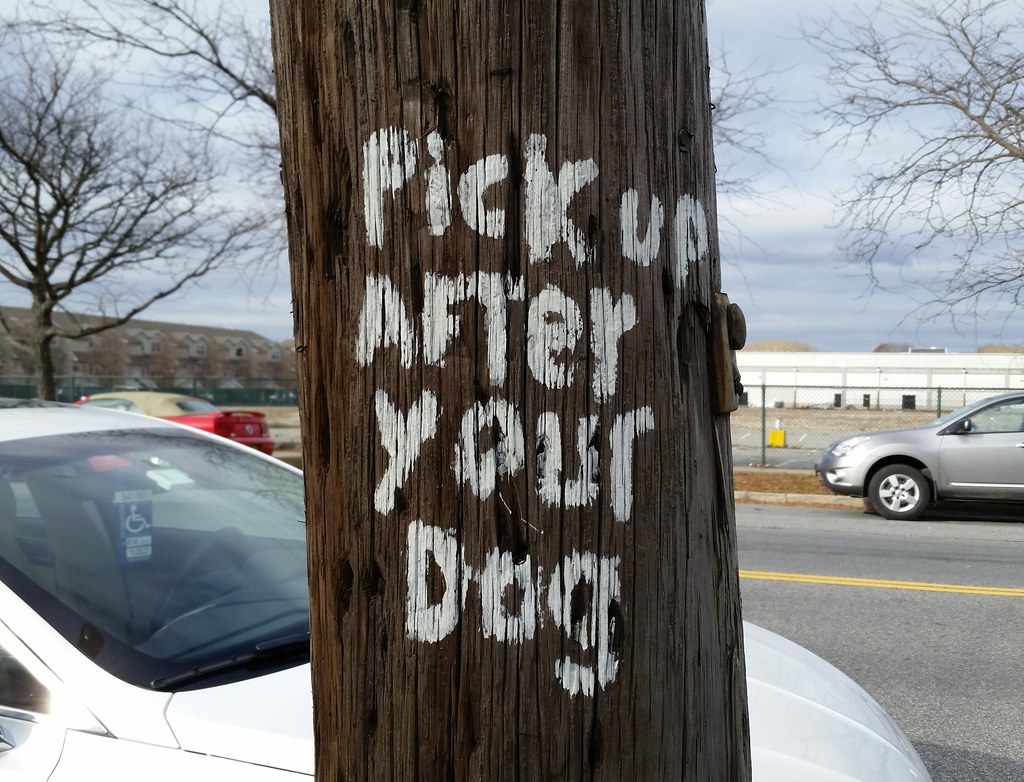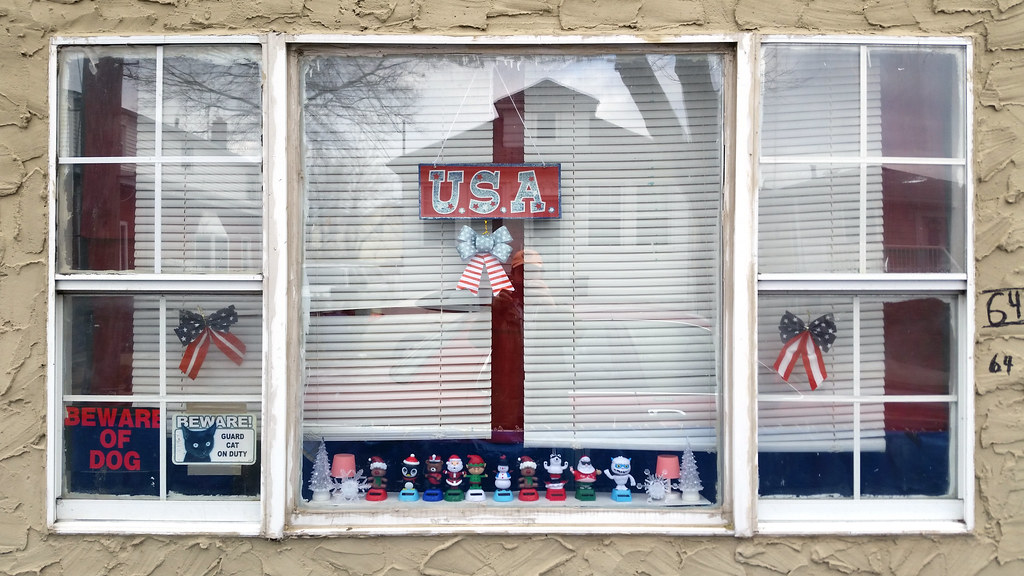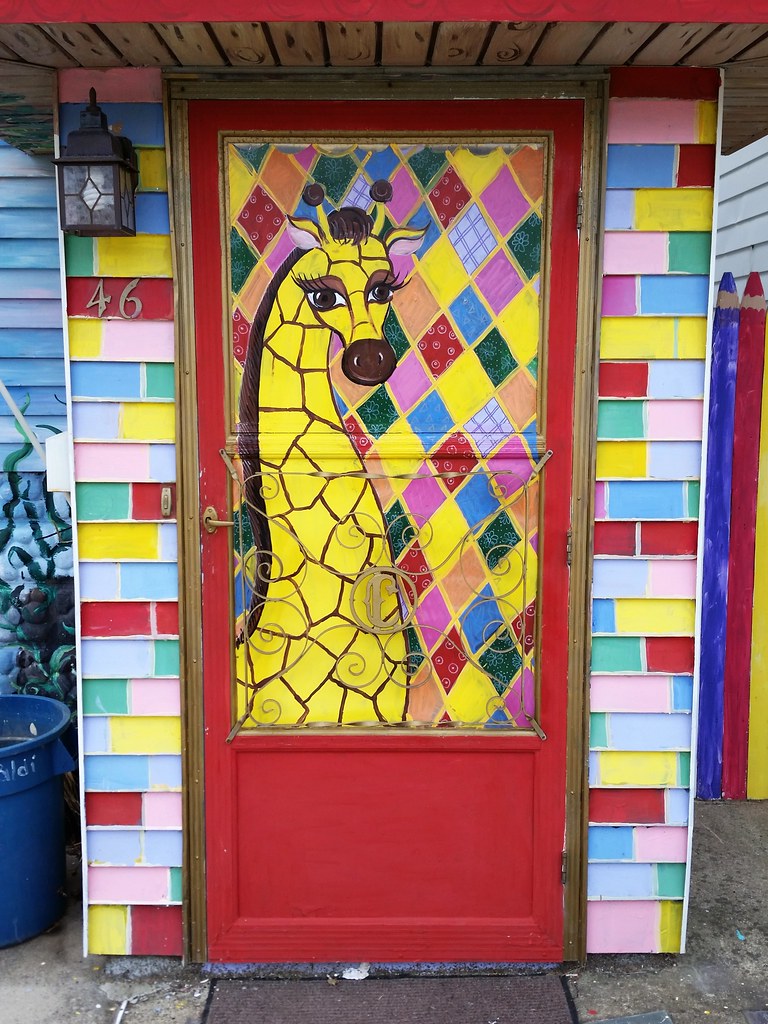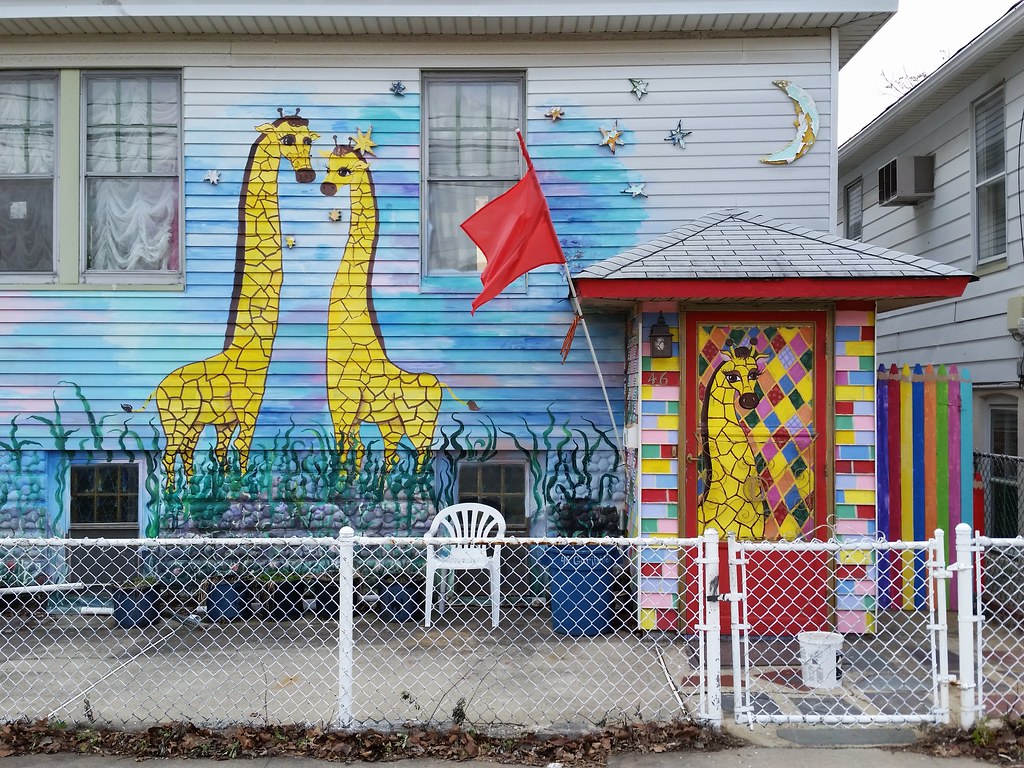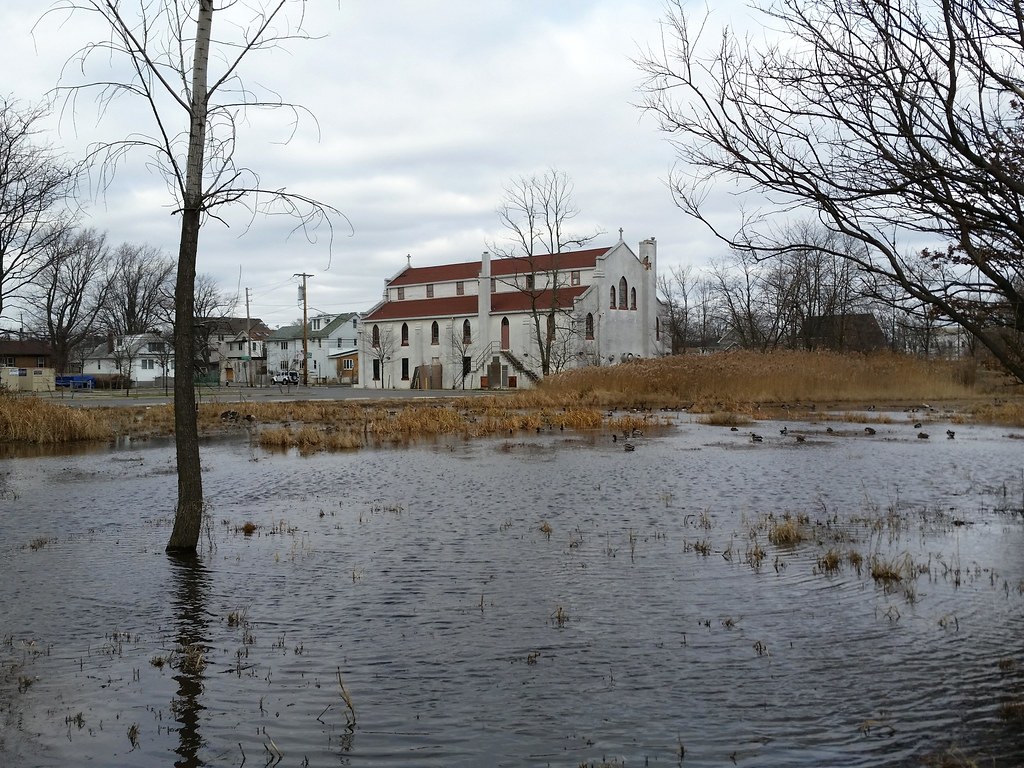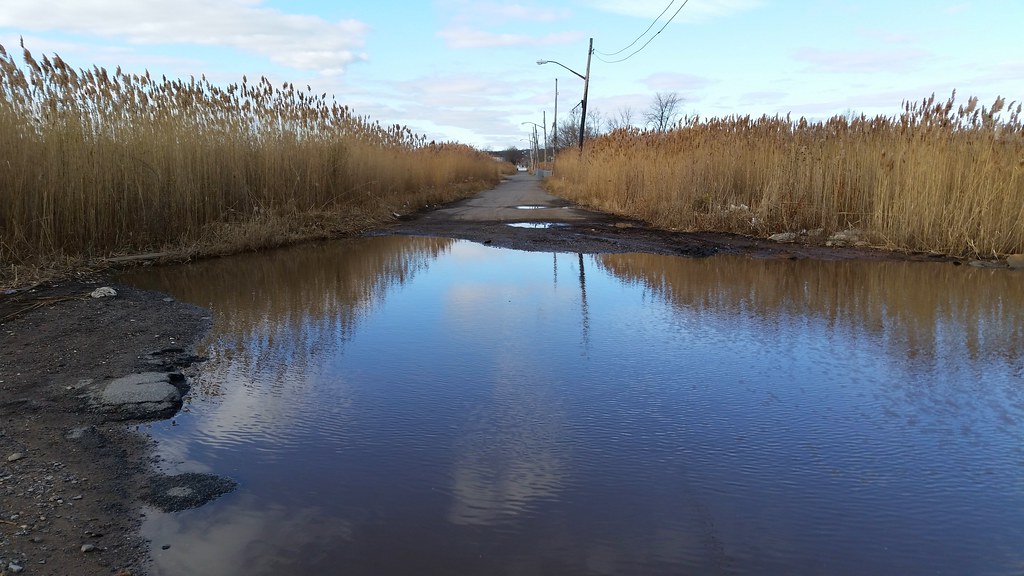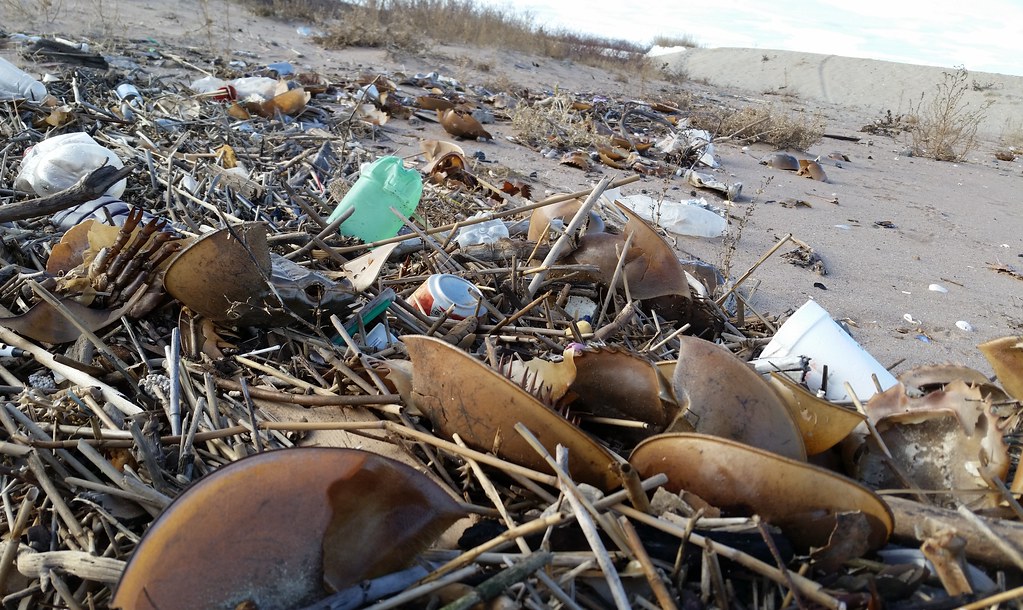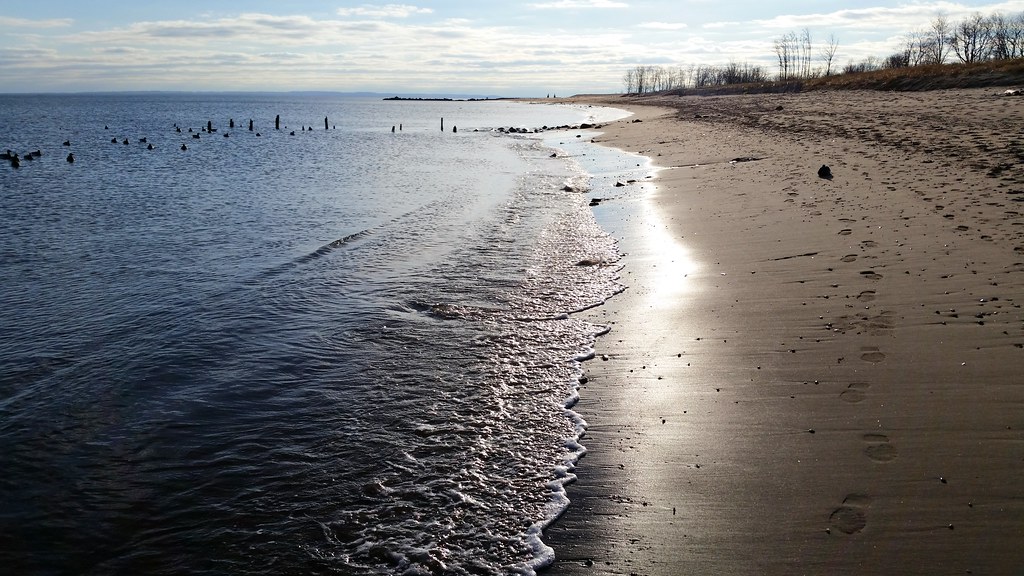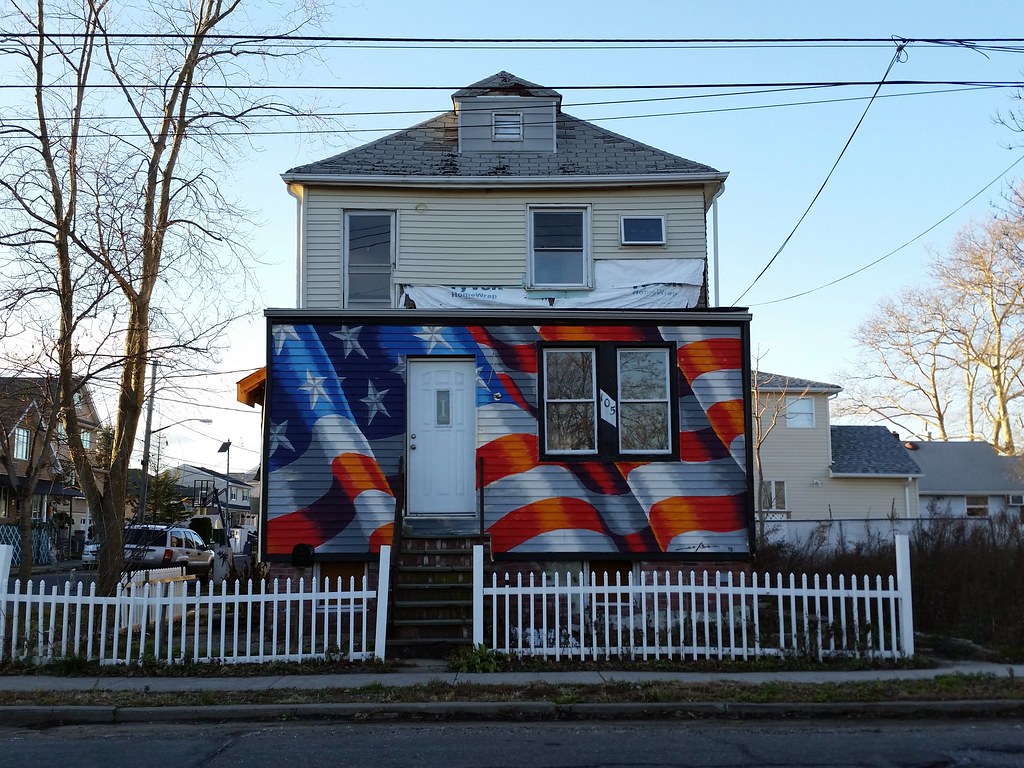
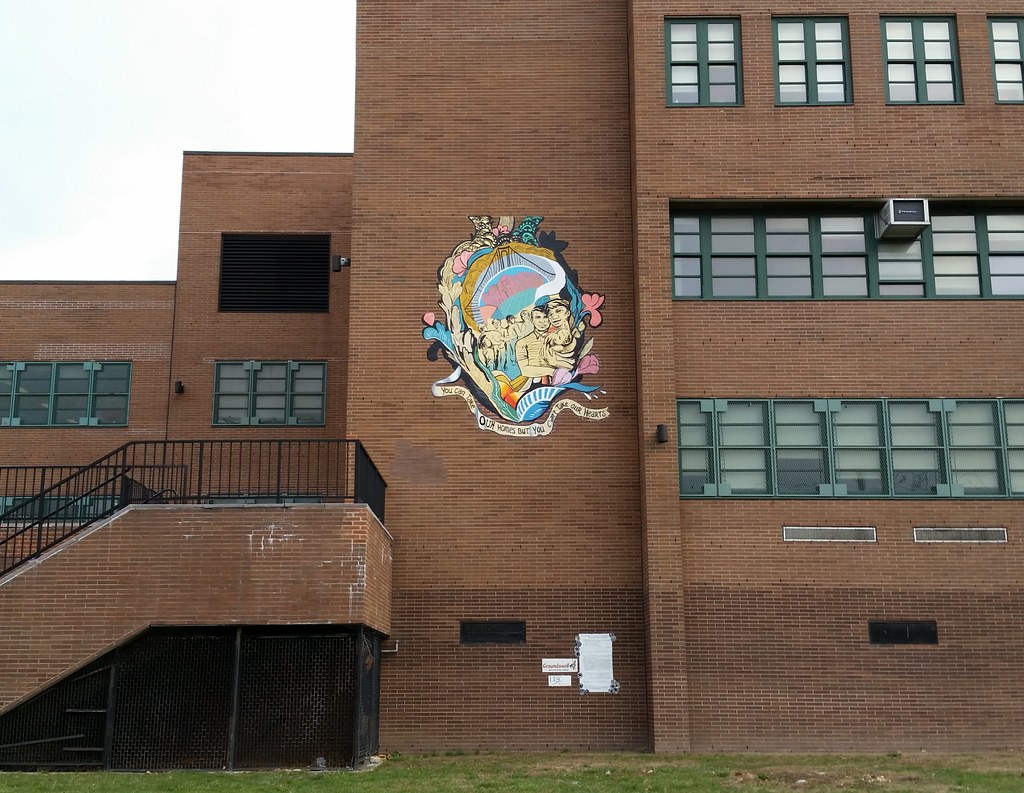
A response to Hurricane Sandy: "You Can Take Our Homes But You Can't Take Our Hearts"
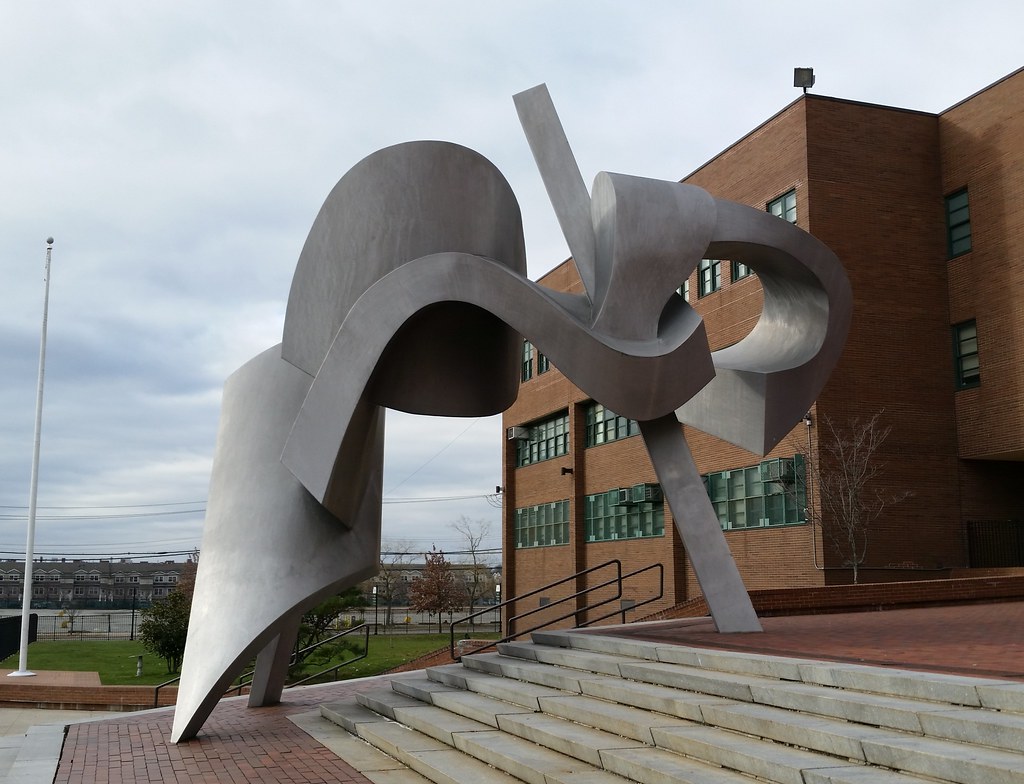
Named after a graffiti tag seen on subway cars around the time of its creation in 1982, this colossal piece by Bill Barrett can be found on the steps of New Dorp High School. According to an NY Times art critic, it is "one of the most successful public sculptures in the city", and it is supposedly popular enough at the school that its likeness was once put on the football team's helmets.
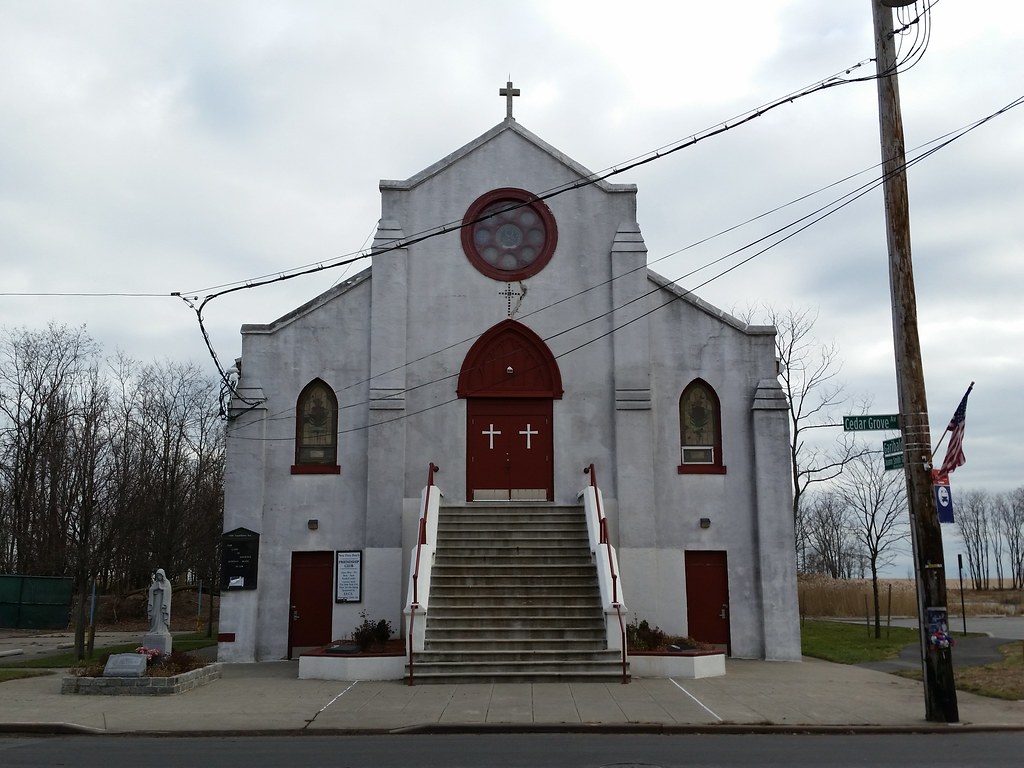
Our Lady of Lourdes is, I would have to imagine, the only Catholic church in NYC that is owned by the city, and certainly the only one that stands inside a public park. How did the Parks Department come to be the landlord of an active house of worship? Well...
The church was erected here in New Dorp Beach around 1924 to serve the area's bungalow-dwelling population. Between 1958 and 1962, to make way for a shorefront parkway that Robert Moses wanted to build, the city used eminent domain to acquire all the properties in New Dorp Beach east of Cedar Grove Avenue (map). With the exception of the church, all the buildings that stood there — including dozens of bungalows and an old hospital — were demolished, only to have the parkway plan never come to fruition (aerial photos: 1951, 2012). The condemned land is now city parkland, leaving Our Lady of Lourdes in the odd position of having to rent its own building back from the city, and leaving the city in the odd position of owning an active church.
Hurricane Sandy's massive storm tide ravaged many nearby houses in New Dorp Beach, but the church's chapel, standing well above street level at the top of the steps, was untouched by the rising waters. The ground floor, however, was ruined, forcing the city-funded senior center located there to close. The center is still shuttered today and will be for some time, but the city now has plans in the works for its reconstruction.
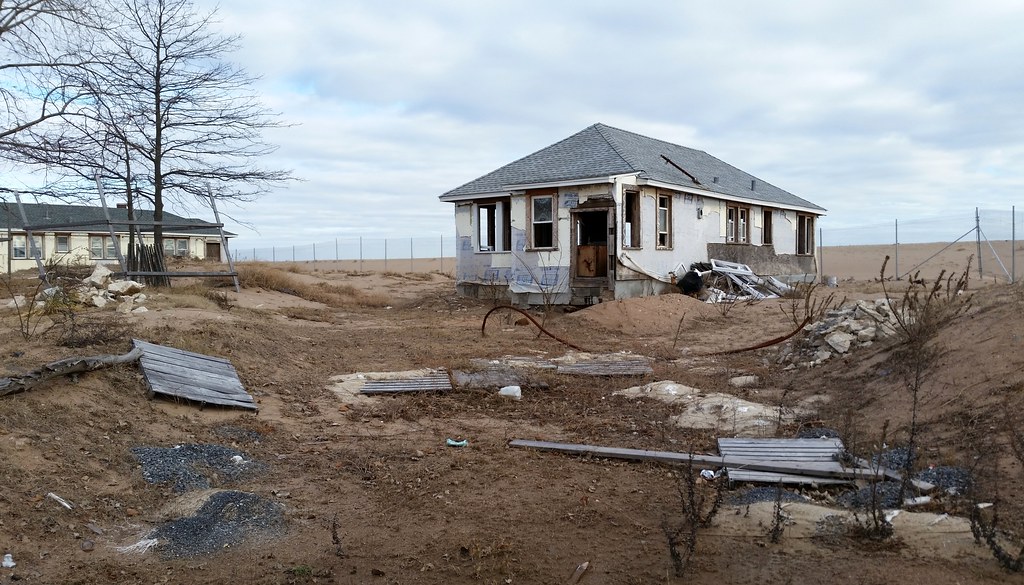
This is the former site of the Cedar Grove Beach Club, a collection of cottages mostly built between 1907 and 1924 that was Staten Island's final beach bungalow colony and the city's final beachfront bungalow colony (with a few exceptions, the houses stood in a single line right on the beach).
Between 1958 and 1962, all the private property along the waterfront in this area was acquired by the city via eminent domain to make way for a proposed shorefront parkway that never ended up getting built. Most of the buildings on the condemned land were demolished, including, as we've learned, dozens of bungalows in neighboring New Dorp Beach, but the Cedar Grove bungalows were left intact. Having become city property, they were then rented back to the former owners, who continued spending their summers here. 22 of the houses had to be leveled after sustaining heavy damage during a nor'easter in 1992, but the other 42 remained as a seasonal getaway.
After the summer of 2010, the city ended its rental agreement with the residents, intending to bulldoze most of the buildings and open up better public access to the beach. The bungalows left standing, as many as seven of them, would be transformed into various park facilities. The two houses you see above are the only ones that ended up being spared (as evidenced by pre-Sandy aerial photos), and it appears that they are now going to be demolished as well because of damage from Hurricane Sandy. So long, Cedar Grove.
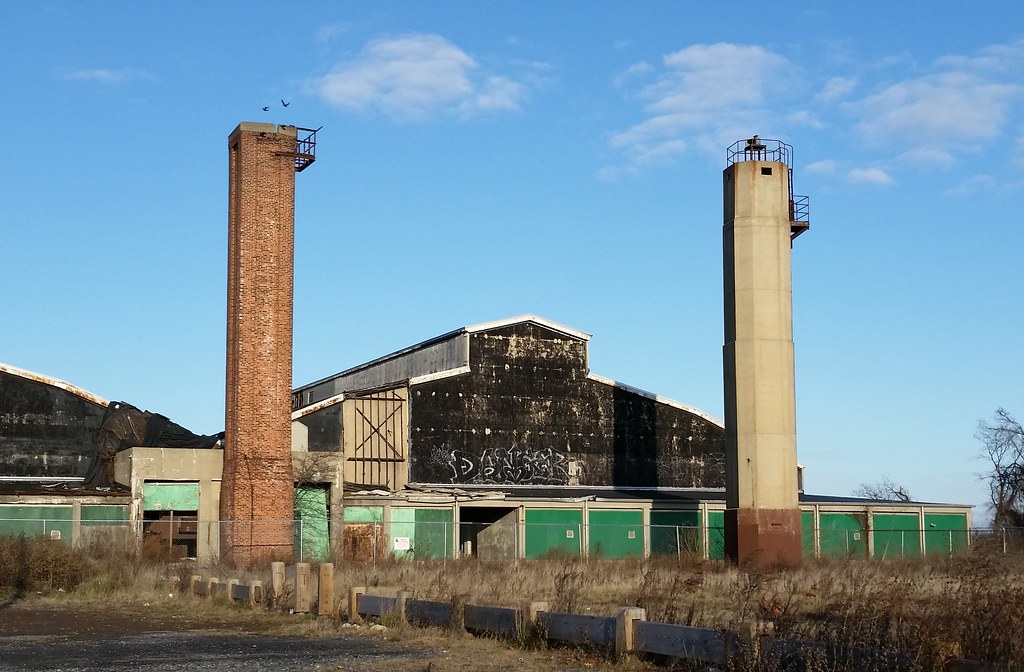
The old parachute drying tower (left) and Elm Tree Lighthouse at Miller Field
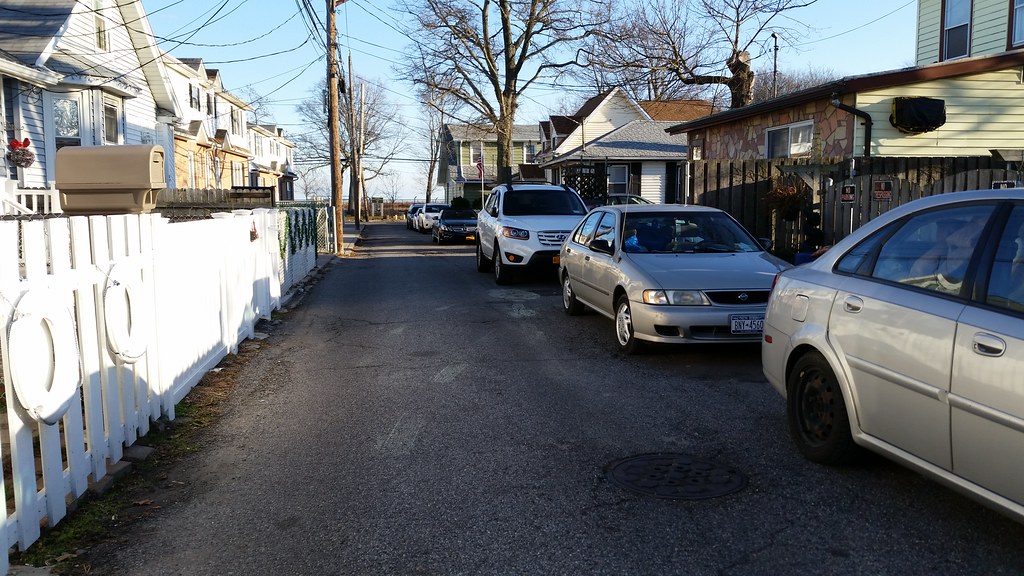
The narrow roadways in the surviving inland section of New Dorp Beach reflect the neighborhood's origins as a bungalow colony (Street View).
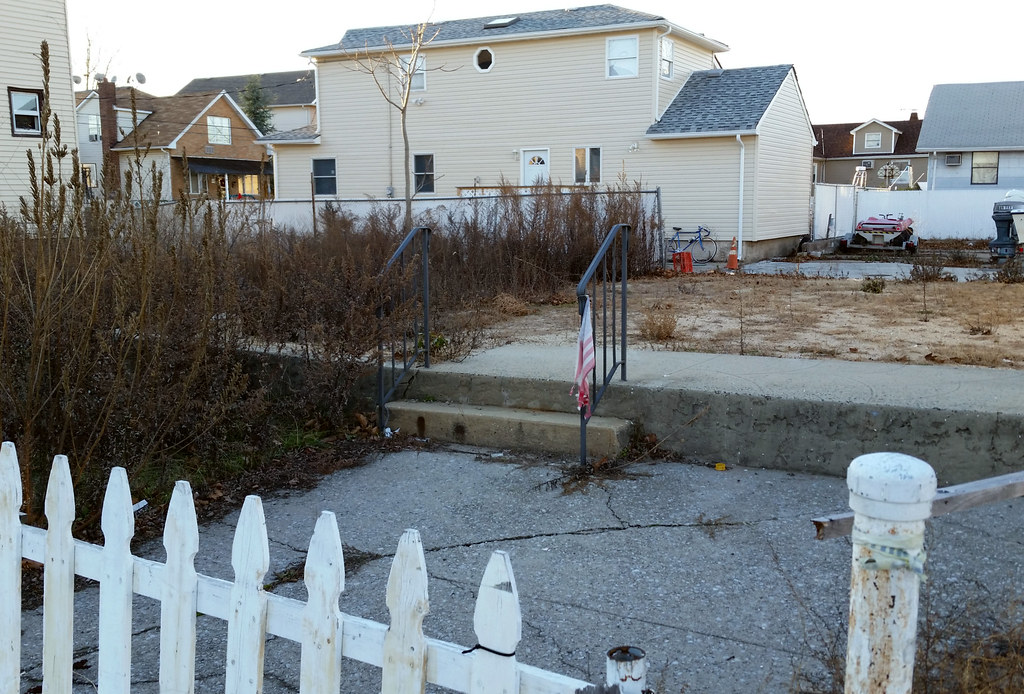
The house that once stood here was demolished after being wrecked by Hurricane Sandy. The owners of this property, Sheila and Dominic Traina, also lost other buildings in the neighborhood, including their own home at 67 Cedar Grove Avenue. A mini-controversy ensued when Allstate used footage of their destroyed house in a back-patting post-Sandy commercial even as the insurance company was denying the Trainas what they believed to be fair compensation for their losses. After the wreckage of the house was cleared, the flag-painting Staten Island artist Scott LoBaido installed a sculpture on the lot entitled Waiting, which "symbolize[d] the frustrating world of Island survivors of the storm. After lives lost, homes damaged or demolished, possessions ruined, most find themselves in a bureaucratic limbo, waiting for help that never seems to arrive."
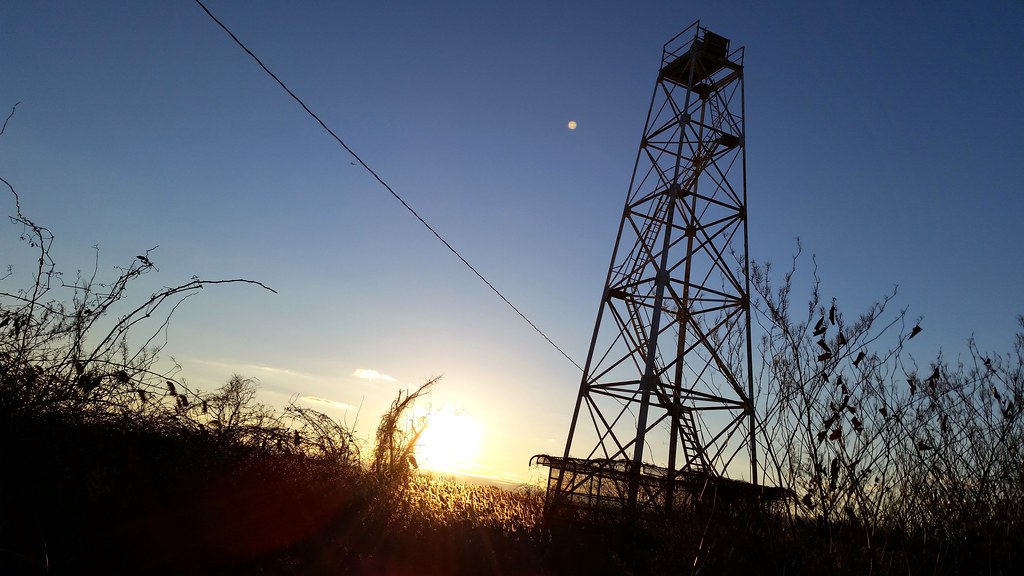
This marshside beacon (bird's eye view) serves as the front range light for the Swash Channel in Lower New York Bay. (The rear range light is located farther inland and at a higher elevation. When the two lights are aligned from a ship's point of view, that means the ship is correctly lined up with the channel and can safely proceed through it. Here's an example of what two aligned range lights look like.) The Elm Tree Lighthouse (which we saw earlier today) and the New Dorp Lighthouse served as the front and rear range lights, respectively, for the channel until 1964, when the tower pictured above became the new front light and the stately Staten Island Lighthouse, which was already in use as the rear light for the heavily trafficked Ambrose Channel, had a second light added to it so it could also function as the rear light for the Swash Channel.
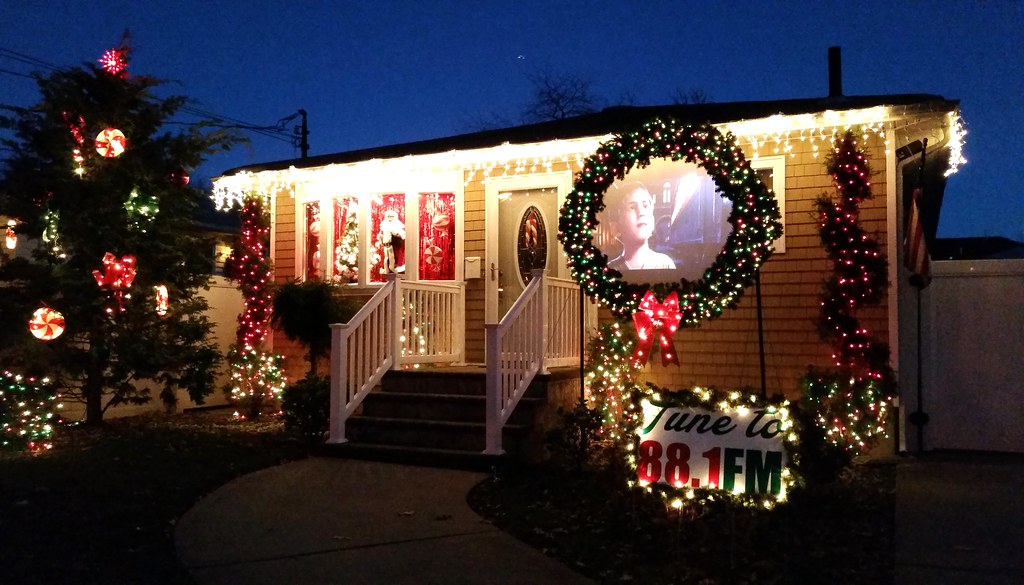
Welcome to the LoBraico family theater. Just pull up to the curb and tune your radio to 88.1 FM. Now playing: The Polar Express.


